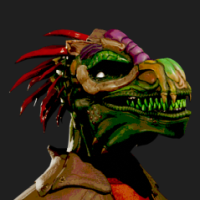
M.U.L.E. Zine Released
After something like 7 months of on and off work, it is done. It's been a few days since I've posted it for the world, and the response has been more than I expected (which, historically, is nothing.)
You can read that here:
https://mrblacksbox.net/mule/zine.html
You'll need to have read that in order for any of what follows to make sense.
The Debrief
It is important that I write down what the process was, if for no other reason that I don't get to lie to myself later. This project is easily one of the most difficult things I've ever done. I've made long comics before, but the added dimensions of targeting physical print and a non-fiction, researched-based piece added a layer of molasses to the entire thing.
M.U.L.E. is a game that has been haunting me my entire life without me even realizing. When I first saw it in the pages of High Score! The Illustrated History of Video Games when I was, like, 12, it was the one of the six Electronics Arts initial releases that sticks in your brain.
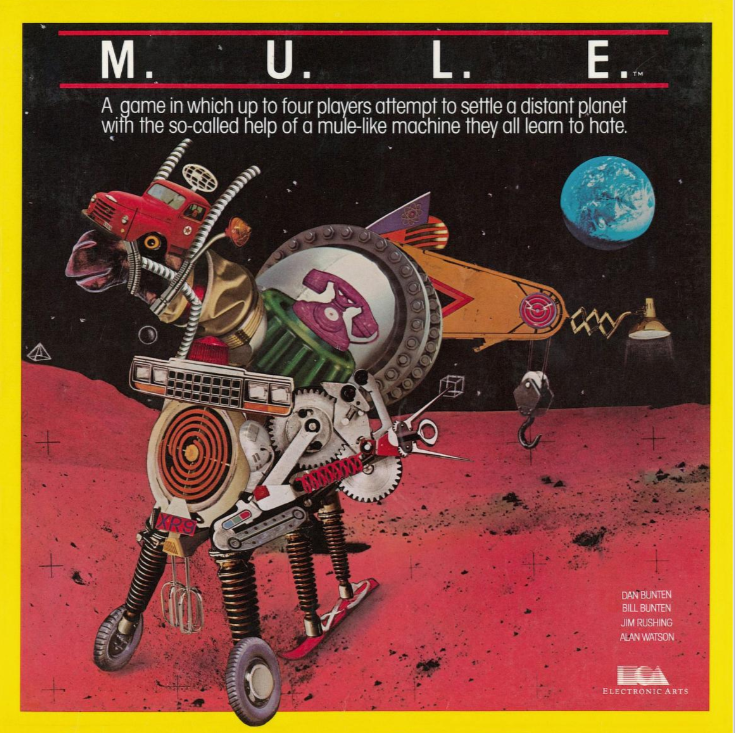
"A game in which up to four players attempt to settle a distant planet with the so-called help of a mule-like machine they all learn to hate." Like. What does that mean. How does a game with that description even play? Infuriatingly the book offered no hints and moved on at breakneck speed to the next landmark event it was trying to cover, so I wouldn't learn for years.
It wasn't until college and the release of Planet M.U.L.E. did I learn first-hand how this game plays, and how mean it could be. You thought CATAN could be mean, but you've never had an alien dance away from you as you tried to buy food to prevent starvation. The only problem I had with PM was that it was a solid hour of a block of time to commit to, which doesn't really work when you have classes. I would go on to backfill the experience, emulating a Commodore 64 at one point to see how that worked.
From then on I generally thought about M.U.L.E. only when playing some other game attempting to ape some of its functionality. Usually along the lines about how MULE did it better.
Zine Conception
A bunch of stuff happened at once, but the gist was this:
- A zine art collective I was part of was hosting a working group of sorts to make a submission towards Shortbox comic expo, a digital zine fair. 16 pages minimum, 5 months to finish, comic format. Our version was called halfbox. I did a little poll with 4 other ideas, and this one won.
- I discovered MULE Online in November 2024. I managed to get a 3 player game together for a Christmas party, where we all lose to the computer because the events stripped us of all our assets in quick succession. We talk about that game to this day.
- Game discourse was getting... weird. A lot of games were getting shot down for not looking absolutely pristine, which felt new (there was a time when making fun of glitches on consoles was a pastime). This flork of cows comic came later but perfectly captures what I was feeling:
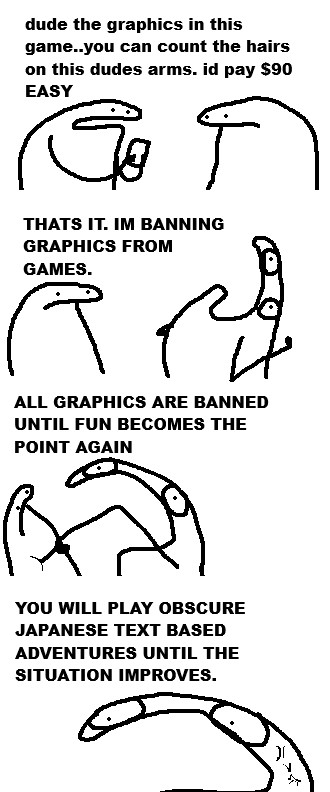
An aside, I'm always bummed that video game history always seems to start 10 years ago from now. This is partly a problem with how the industry hates preservation, but it also feels like a general incuriousness has seeped into everything. You don't get to call yourself a cinephile if you don't watch black-and-white movies, but you get to be a hardcore gamer if all you do is play Call of Duty. I dunno.
So instead of just bitching about it, I would try to show some enthusiasm towards something older, in an albeit self-indulgent way.
Research and Scripting
A large part of why this thing took so long was the research. I'm... ok at research. I always forget how challenging it can be to find primary sources if you aren't part of a university or researcher group. It wasn't a huge problem, but it did require fact-checking stuff from oblique angles.
A researching method that still serves me here is "overshooting", in where you look up you're sources' sources. This is great if you are trying to figure out the veracity of a news story, and it also tends to give new leads. The problem I kept running into with this story is that a lot of those primary sources are evaporating. "The Internet Never Forgets" is bullshit. The internet forgets the moment you jingle some keys or some private equity firm decides keeping a newspaper's archive around is a few pennies too many.
Even if a newspaper's archive is still around, it tended to be paid access. Look. I'm all about covering sources expenses by paid access, but the problem is they tend to be paid as subscriptions. That's a large, up-front cost to see that this archive does not in-fact have the date you were looking for. Dani (as Dan) and Co were interviewed a few times for various Arkansas newspapers but I'll never get to read them because those dates are just outside of the bounds of the archive itself. Let me pay a buck to read an issue of a date please.
One of the hardest things to find, weirdly, was a picture of "Wheeler Dealer's" custom controller. You would think that the internet would be more interested in a controller that enabled the first multiplayer games on home computers, but no! After a month of searching, I was extremely lucky in finding a picture of it in a museum curator's retirement announcement.
In one of those weird twists of fate, I would find it because I found a document detailing OzarkSoft's handover of Dani's archival assets to the Strong Museum. I had been to the Strong museum and took a bunch of pictures in 2018. Excited, I would search my photo roll to see if maybe I took a picture of it by chance, but alas, I took pictures of the case next to it.
Other research issues were self inflicted. Quick: Which one is Alan, and which one is Jim?
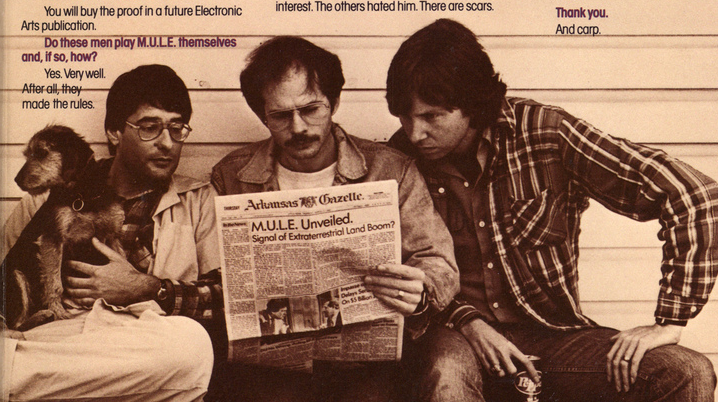
The famous gatefold photo didn't bother to label these guys. Also, there aren't many period pictures of them except for Dan beyond what they may have in private family albums. There are pictures of them as executives for EA, and their LinkedIn, but they look much different, and to make matters worse, their overall descriptors are similar to each other. Why does this matter? Well, if I wanted to draw a picture of everyone working together in the Office/Kitchen they were stuffed in, labeled with their names, this is what I got. I eventually just had to make an educated guess. Please god if I got this wrong and someone can give convincing evidence as to why, please let me know, you can reach me at operator@mrblacksbox.net .
This problem reared its absolutely loathsome head every time I tried to thumb a panel out. Did the Atari 800 have a monitor? (No... it was intended for TV, but the 800's S-Video like output could be adapted to other monitors). How much did an Atari 8-bit machine cost? (Hard to tell, they were sold at Atari stores and they could be financed or bundled with different stuff, but the number bandied about is $1k for the 800 kit and $500 for the 400 kit). What are the icons for the resources? (Man, I still don't know). What exactly did Dani do as a consultant? (She mentions girl games but is otherwise unspecific.) Do you even develop Atari games... on an Atari? (The answer here is mostly yes, but it's a real question to consider when you find out that Doom was made on a SGI workstation). Each time I would go looking for answers to these questions, I would find absolutely new questions that I never realized were unanswered.
The hazard of writing about recent history is a lot of people who lived through it are still around, but they aren't readily offering that fact up either. I was emotionally ready to have my only interaction with people be them chiming in that that the Apple II did have graphics, actually. A weird feeling, that.
I would be having the Operator speaking as an authority, which does narratively streamline stuff, but the also introduces a new danger. People who know me also know that if I get going, I can spin up three different tangents then resume the original thread in like ten minutes. That's just how I tell stories. There was a version this script that was as inflated as 80 pages, which experience has shown that a page in my script is like a page and 25% of another, so really we were looking at 100+. So much stuff was dissolved in the interest of actually finishing, but I think the through-line came out pretty good. I do have to have faith in the reader taking things at my word though, which isn't really my style.
Drawing and Construction
There is less to say about this. I drew and organized the thing in Clip Studio Paint, and BreaknBake helped me organize the pages into a folio.
There exists alternate versions of the first three pages. I hate them. They aren't fun, they're kind of boring in fact, and actually caused progress to seize for about a month. I eventually got through it by finding the dirtiest brushes and pen-tips I can find (the Dawner Brushes, if you're curious) and resolving never to draw the Operator standing straight.
I'm asking a lot in a 60 page comic about a game, we can at least have some fun doing it.
The section art was collages of printouts that were then re-scanned and toned, giving that nice Xerox look. Unfortunately, that comes at the cost of some clarity, so there is a little bit of draw-over.
3D modeling is slightly more my thing than drawing, so I made use of that for the back section and the covers. The Operator in that section is technically the Adjuster wearing prosthetics, but I bet most people don't even know what that means. I made the MULE from scratch in about 3 hours.
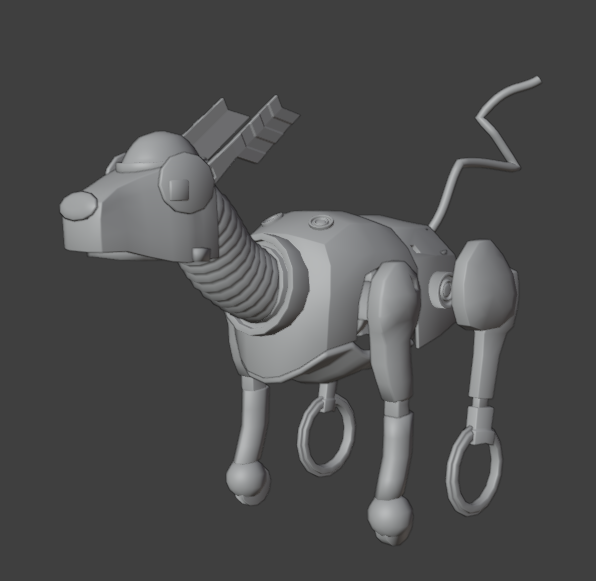
The art happened basically in a month and some change. The scripting and editing and research had been going on long enough, and I tapped the brakes a little when Shortbox was canceled for 2025. If I managed my research time better and didn't crash and burn that first time, I could probably have done this much sooner, but alas.
I expected to have to really dial-in the screen tone, but in reality, I didn't have to touch it that much. The most recurring finding is that printing for A5, a dense screen tone is much darker than it seems on the screen, so to make it half of what I thought looked good on the screen was what I was aiming for.
Art is a Poison
The final section gave me a lot of problems. The seven number is an under-estimation as I'm not counting the aborted directions and tumors I had to cut.
Some drafts were based in a toxic jealousy that I couldn't quite shake. Dani's career had an eerie similarity to my own, but went in directions that are simply impossible today. You don't really get to be just a game designer anymore, the two closest analogous directions you can take is a game experience consultant for the big guys or as an Indie Developer who is also doing literally everything else. Dani is also a St. Louis native, but relocated to Arkansas. Dani also felt that something wasn't quite right with how things were playing out in the industry. Dani also was an engineer who didn't quite feel in the right place. It was like looking in a fuzzy mirror of yourself where things went right but also very wrong. I could write a whole other zine about that, so I had to expunge this angle simply in the interest of time.
Other drafts tried to bring home a point that was false, that I was trying to finish a class essay that knew essay's made three points and then wrote a conclusion, that felt bad too.
It took realizing that I had spent six months on this zine that I cared, and others should care. I wound up writing the ending you see here basically raw in Clip Studio Paint; a dangerous exercise as there is no spell check in that thing. But I needed this project done, every attempt at finishing this thing lead to a roller coaster of emotion that would leave me drained the following day; it needed to end.
Now What?
I have some supplies coming in to make an extremely limited print run with my own printer. I'll explore seeing what it takes to maybe sell some of my own and maybe a run with an actual printer (it's too late to get a table at SLICE unfortunately). With Shortbox canceled, things are a little awkward.
I'll take a rest for now and then figure out what I want to do then.
